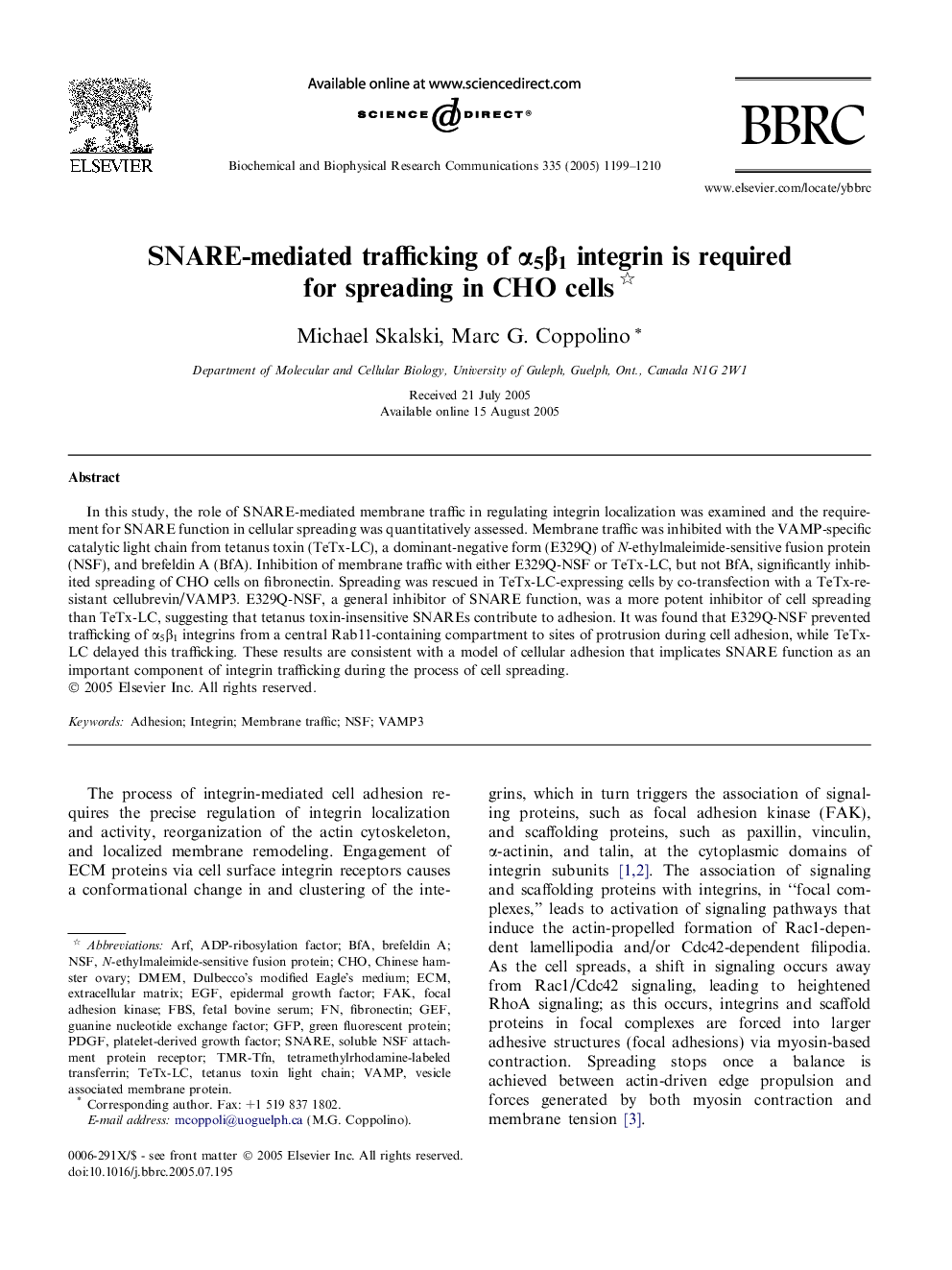| Article ID | Journal | Published Year | Pages | File Type |
|---|---|---|---|---|
| 10768466 | Biochemical and Biophysical Research Communications | 2005 | 12 Pages |
Abstract
In this study, the role of SNARE-mediated membrane traffic in regulating integrin localization was examined and the requirement for SNARE function in cellular spreading was quantitatively assessed. Membrane traffic was inhibited with the VAMP-specific catalytic light chain from tetanus toxin (TeTx-LC), a dominant-negative form (E329Q) of N-ethylmaleimide-sensitive fusion protein (NSF), and brefeldin A (BfA). Inhibition of membrane traffic with either E329Q-NSF or TeTx-LC, but not BfA, significantly inhibited spreading of CHO cells on fibronectin. Spreading was rescued in TeTx-LC-expressing cells by co-transfection with a TeTx-resistant cellubrevin/VAMP3. E329Q-NSF, a general inhibitor of SNARE function, was a more potent inhibitor of cell spreading than TeTx-LC, suggesting that tetanus toxin-insensitive SNAREs contribute to adhesion. It was found that E329Q-NSF prevented trafficking of α5β1 integrins from a central Rab11-containing compartment to sites of protrusion during cell adhesion, while TeTx-LC delayed this trafficking. These results are consistent with a model of cellular adhesion that implicates SNARE function as an important component of integrin trafficking during the process of cell spreading.
Related Topics
Life Sciences
Biochemistry, Genetics and Molecular Biology
Biochemistry
Authors
Michael Skalski, Marc G. Coppolino,
